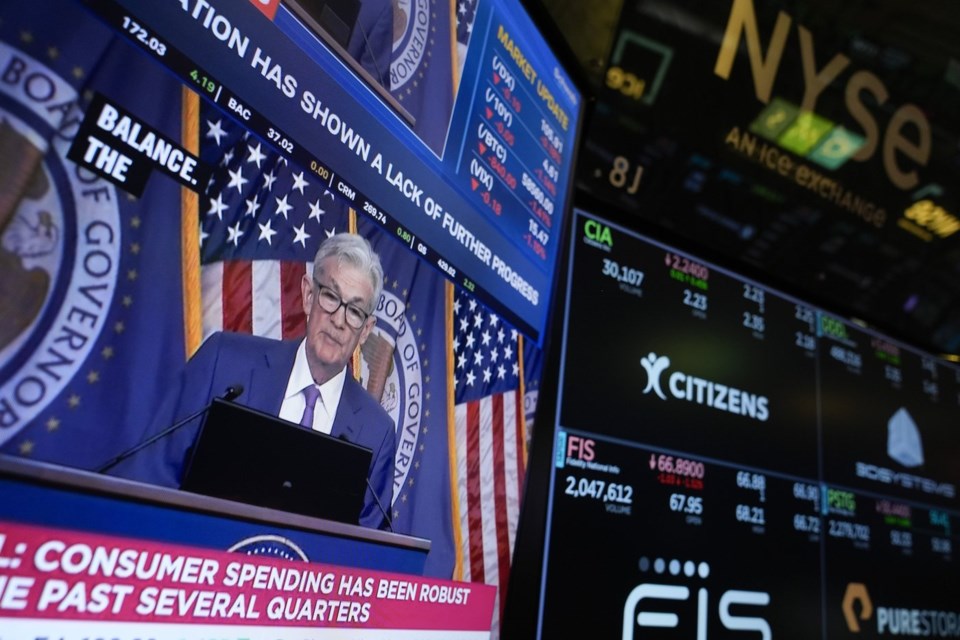WASHINGTON (AP) — Federal Reserve officials at their most recent meeting welcomed signs that inflation is slowing and highlighted data suggesting that the job market and the broader economy could be cooling.
Both trends, if they continued, will likely lead the Fed to cut its benchmark interest rate in the coming months from its 23-year peak of 5.3%.
The minutes of the Fed’s June 11-12 meeting, released Wednesday, showed that the policymakers saw several factors that could further ease inflation in the coming months. These factors included the slower growth of wages, which reduces pressure on companies to raise prices to cover their labor costs.
The policymakers also pointed to several cases of retail chains and other businesses lowering prices and offering discounts, a sign that customers are increasingly resisting higher prices.
Yet the officials also said more evidence was needed to demonstrate that inflation was returning sustainably to the Fed's 2% target. They signaled that they were in no rush to reduce borrowing costs.
The minutes of the Fed’s meetings sometimes provide key details behind the policymakers’ thinking, especially about how their views on interest rates might be evolving. The financial markets are eagerly awaiting more clarity about the likely timetable for the Fed to begin cutting its benchmark rate. Rate cuts by the Fed would likely lead, over time, to lower borrowing costs for mortgages, auto loans and credit cards as well as business borrowing, and could also boost stock prices.
In a noticeable shift from the minutes of previous Fed meetings, the officials cited concerns that a further cooling of the job market might lead to increased layoffs. So far, slowing demand for workers has mostly appeared in the form of fewer job postings.
Their stated concern about a possible rise in layoffs suggests that the central bank's policymakers are starting to more fully consider both their policy goals: Stable prices and maximum employment. That is a shift from the previous two years, when the Fed was focused solely on curbing inflation, which reached a four-decade high in 2022 of 9.1%.
“You’re going to see a greater emphasis on the maximum-employment side of the mandate,” said Derek Tang, an economist at the consulting firm LHMeyer. “Now that inflation is falling ... they can afford to say: 'Look, inflation is not the only thing we have to worry about now. We can also afford to consider the labor market.' "
Though Fed officials generally see the economy as healthy, the minutes showed greater concern about signs of a slowdown. Consumers, particularly lower-income households, are spending somewhat less, companies are advertising fewer job openings and economic growth weakened in the first three months of 2024.
"The vast majority of participants assessed that growth in economic activity appeared to be gradually cooling, and most participants remarked that they viewed” the central bank’s benchmark rate as high enough to slow growth and inflation, the minutes said.
After last month's meeting, Fed officials issued a statement saying that inflation had resumed declining toward their 2% target. But they also scaled back their expectations for rate cuts this year, from three cuts to just one.
At a news conference, though, Chair Jerome Powell downplayed the forecast for a single cut and said either one or two cuts were equally plausible. Four of the 19 policymakers said they envisioned no rate cuts at all this year. The remaining 15 officials were nearly evenly split between one and two cuts.
On Tuesday, financial markets drew encouragement from remarks Powell made during a monetary policy conference in Portugal. Powell said the Fed had made “quite a bit of progress” toward bringing inflation back to 2%.
Consumer price increases were persistently high in the first three months of the year, he noted, but in April and particularly May, inflation resumed the steady decline that had begun in the second half of 2023.
In the latest Fed minutes, many of the officials also noted that lower- and moderate-income households are “encountering increasing strains as they attempted to meet higher living costs.”
“Such strains," the minutes said, “which were evident in rising credit card utilization and delinquency rates as well as motor vehicle loan delinquencies, were a significant concern.”
Christopher Rugaber, The Associated Press

